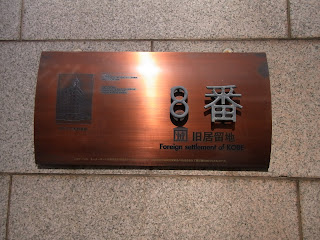Outside Himeji, at the terminal station of Bus number 8, is a ropeway that goes up Mt Shosha to Engyoji, a temple of the Tendai sect of Buddhism. Engyoji is one of Tendai's main temples and is also on the pilgrim circuit of temples and shrines in Western Japan. East Asian religion is noteable for it's tendency to syncretism and the pilgrim circuits in Japan tend to be inclusive of all Buddhist sects as well Shinto. Pilgrim passports are available - with each temple and shrine having its own stamp.
On arrival at the top we had the option to either walk or take a minibus. It was a nice day and only a km or so, so we opted to walk. The fact that their bus fee gets marked down as a donation to the temple, to avoid tax liability also rankles, perhaps more than it should.
Anyway it was a good decision. Aside from the fresh mountain air and good weather, it was pretty; the dirt road meandered up the mountain through the trees lined with Buddhist statues (that look like Hindu gods) and donation stones to the temple bearing the names of the donors and how much they donated...
A Vishnu like statue along the way
A meandering path - the fence on the left is made of stone donation pillars
A jizo protecting a cemetery on the way up
Maniden, this is the main building.The original building, thought to have been built in the 900s, burned down in 1921 and was re-opened in 1933.
Lanterns at the temple with chrysanthemum, the symbol of the emperor (and to that extent of Shinto), with the ancient Buddhist manji (swastika) symbolizing the intersection of love and intellect. Temples have been persecuted at various stages of history, in Meiji and the prewar era many temples were at pains to show they were not a threat to imperial power.
The roof of Maniden. Master craftsmen needed for this kind of detail.
A statue of Buddha
A cedar tree thought to be 700 years old - still going strong.
The jikido, or dormitory for monks is on the left and now houses treasures of the temple -statues of Buddha, the godess of Mercy, protector gods among others. Unfortunately none is labeled in English, and the Japanese labels give no indication of age or significance. It was originally built in 1174 (Muromachi era), but was dismantled and reconstructed in 1963.
The Daikodo is on the right. It was originally built in the late 900s, but was dismantled and reconstructed in 1956.
Part of the last samurai was filmed on location here
.

Spectacular wood work
This isnt bad either.
Wood doesnt last forever... this is a beam that was replaced due to internal rot.
Jizo dedicated to mizuko (water babies), babies that did not survive to be born alive. To buy a statue here for dedication costs 30,000Y.
Practical information about how to get here etc can be found at
The details of the temple came from their tourist guide.


